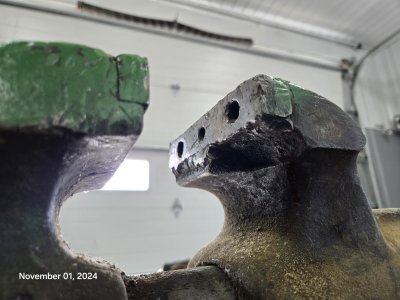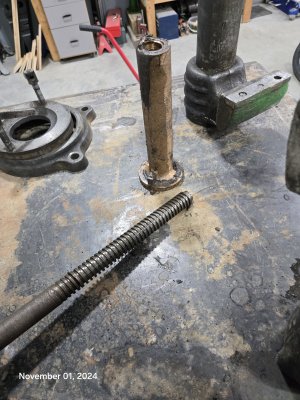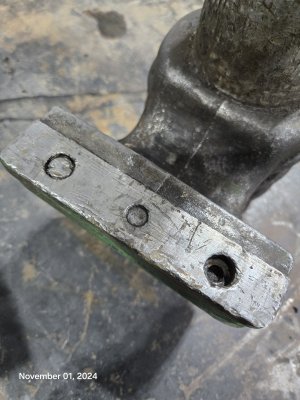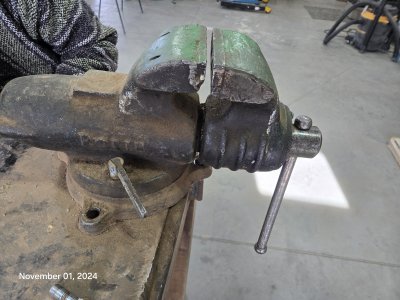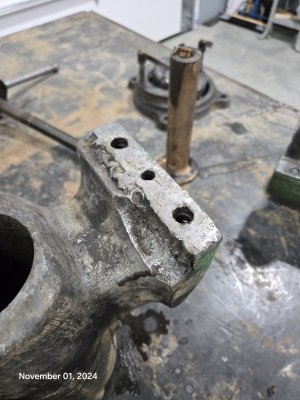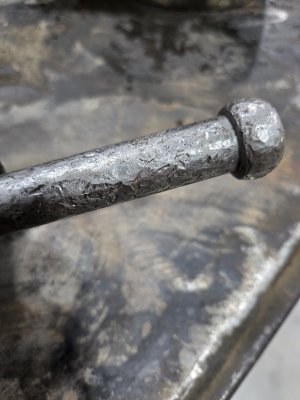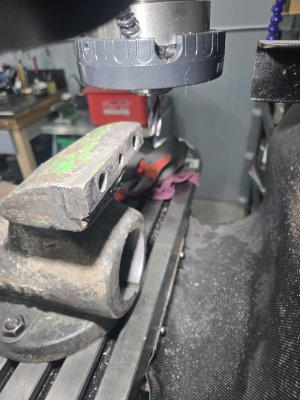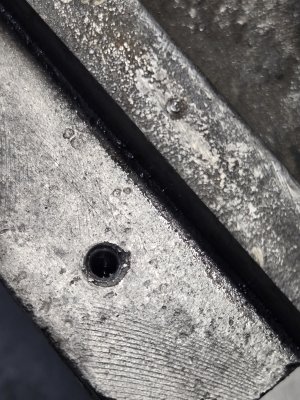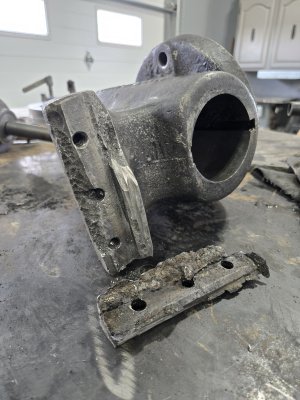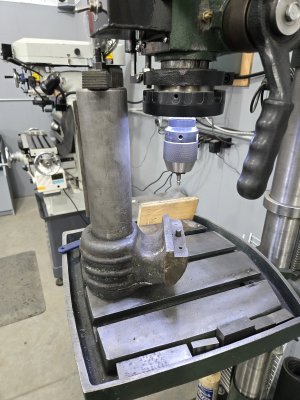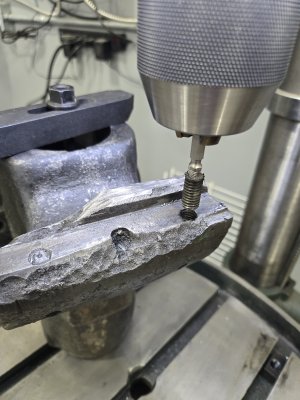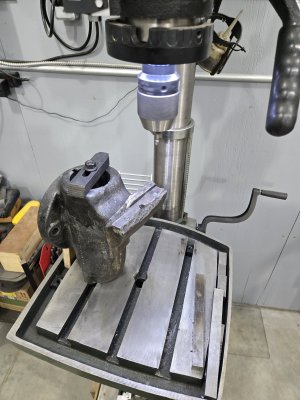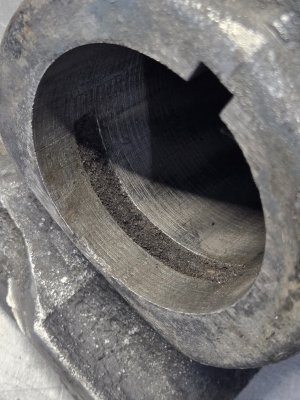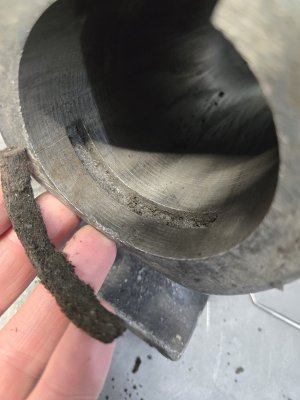DPittman
Ultra Member
I have an old 5 inch "Robin" made in Canada 5" bench vise that has had a very hard life. I'd like to fix it to a useable state as it was a really nice made vise with a totally enclosed spindle/screw with cast bronze internal acme thread for the screw which still seems very smooth. Every part of this vise has had years of hammers and abuse put to it. The jaws are totally buggerd and even the casting below one jaw has been busted out. The one jaw has been welded in and both of them have the retaining bolts busted/needed or welded in.
The biggest challenge is how to go about removing the old jaws and then how to deal with the missing chunk of cast below the jaw.
The biggest challenge is how to go about removing the old jaws and then how to deal with the missing chunk of cast below the jaw.

